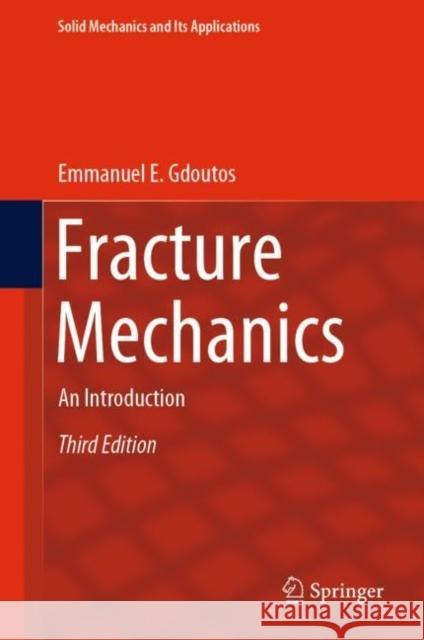Fracture Mechanics: An Introduction » książka



Fracture Mechanics: An Introduction
ISBN-13: 9783030350970 / Angielski / Twarda / 2020 / 477 str.
Fracture Mechanics: An Introduction
ISBN-13: 9783030350970 / Angielski / Twarda / 2020 / 477 str.
(netto: 383,36 VAT: 5%)
Najniższa cena z 30 dni: 385,52
ok. 22 dni roboczych
Dostawa w 2026 r.
Darmowa dostawa!
Solutions Manual
Chapter 1. Introduction.- Chapter 2. Linear Elastic Stress Field in Cracked Bodies.- Chapter 3. Elastic-Plastic Stress Field in Cracked Bodies.- Chapter 4. Crack Growth Based on Energy Balance.- Chapter 5. Critical Stress Intensity Factor Fracture Criterion.- Chapter 6. J-Integral and Crack Opening Displacement Fracture Criteria.- Chapter 7. Strain Energy Density Failure Criterion: Mixed-Mode Crack Growth.- Chapter 8. Dynamic Fracture.- Chapter 9. Fatigue and Environment-Assisted Fracture.- Chapter 10. Micromechanics of Fracture.- Chapter 11. Composite Materials.- Chapter 12. Thin Films.- Chapter 13. Nanoindentation.- Chapter 14. Cementitious Materials.- Chapter 15. Experimental Methods.- Chapter 16. Numerical Methods.
This book discusses the basic principles and traditional applications of fracture mechanics, as well as the cutting-edge research in the field over the last three decades in current topics like composites, thin films, nanoindentation, and cementitious materials.
Experimental methods play a major role in the study of fracture mechanics problems and are used for the determination of the major fracture mechanics quantities such as stress intensity factors, crack tip opening displacements, strain energy release rates, crack paths, crack velocities in static and dynamic problems. These methods include electrical resistance strain gauges, photoelasticity, interferometry techniques, geometric and interferometry moiré, and the optical method of caustics.
Furthermore, numerical methods are often used for the determination of fracture mechanics parameters. They include finite and boundary element methods, Green’s function and weight functions, boundary collocation, alternating methods, and integral transforms continuous dislocations.This third edition of the book covers the basic principles and traditional applications, as well as the latest developments of fracture mechanics. Featuring two new chapters and 30 more example problems, it presents a comprehensive overview of fracture mechanics, and includes numerous examples and unsolved problems. This book is suitable for teaching fracture mechanics courses at the undergraduate and graduate levels. A “solutions manual” is available for course instructors upon request.
1997-2025 DolnySlask.com Agencja Internetowa
KrainaKsiazek.PL - Księgarnia Internetowa









